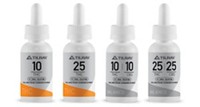Advertisement
Grab your lab coat. Let's get started
Welcome!
Welcome!
Create an account below to get 6 C&EN articles per month, receive newsletters and more - all free.
It seems this is your first time logging in online. Please enter the following information to continue.
As an ACS member you automatically get access to this site. All we need is few more details to create your reading experience.
Not you? Sign in with a different account.
Not you? Sign in with a different account.
ERROR 1
ERROR 1
ERROR 2
ERROR 2
ERROR 2
ERROR 2
ERROR 2
Password and Confirm password must match.
If you have an ACS member number, please enter it here so we can link this account to your membership. (optional)
ERROR 2
ACS values your privacy. By submitting your information, you are gaining access to C&EN and subscribing to our weekly newsletter. We use the information you provide to make your reading experience better, and we will never sell your data to third party members.
Policy
Medicine Quality Faces Challenges
Access, innovation, and globalization: opportunities and hurdles in providing high-quality drugs to the world’s population
by Roger L. Williams
June 27, 2011
| A version of this story appeared in
Volume 89, Issue 26

Globalization of the world’s economies has wrought dramatic changes, and in no arena is this more evident than in the development, registration, production, and distribution of medicines and foods. Remarkable strides in chemistry, biology, pharmacology, and informatics occur daily. Coupled with worldwide manufacturing of medicines, foods, and their ingredients, these scientific advances offer remarkable opportunities for improved health and treatment of illness via access to quality medicines and foods.
COVER STORY
Medicine Quality Faces Challenges
As regulatory and economic structures around the world have struggled to keep pace with technological innovation, however, new challenges have arisen for people and institutions that work to protect public health. As we have seen in the U.S., the task of safeguarding the quality of medicines and foods has become increasingly complex and difficult, mirroring the growth of overseas manufacturing and transnational supply chains.
The International Year of Chemistry’s focus on chemistry’s contributions to advancing human health and the environment and providing sustainable sources of energy, clean water, and advanced materials reminds us of the ubiquity of chemistry in meeting human needs. What is not always as obvious, particularly in the realm of providing people with safe and effective medicines and nutritious foods, is chemistry’s essential role in setting standards against which to measure the quality and identity of those medicines and foods.
The organization I am privileged to lead, the U.S. Pharmacopeial Convention (USP), is focused on the critical intersection where access and innovation meet on the global stage, with an unwavering goal of preserving and advancing public health. USP is a private, nonprofit, science-based, standards-setting organization driven by practitioners and consumers. Its global cadre of volunteers is composed of hundreds of highly committed experts from around the world, supported by an equally committed staff of more than 600 employees.
USP is an old organization, begun in 1820, but in the 21st century it remains focused on the cutting edge of science, law, public policy, economics, and health. USP seeks to improve the health of people around the world through public standards and related programs that help ensure access to good-quality and safe medicines and foods. As in most scientific, technical, and commercial endeavors, standards are a key element in delivering good-quality and beneficial medicines and foods to patients, practitioners, and consumers.
While the idea of a pharmacopeia arose in Europe more than 500 years ago, the first collection of published U.S. quality standards for medicines—the “U.S. Pharmacopeia”—was an early 19th-century effort by American physicians to ensure consistency in how medicines were formulated. Essentially a book of recipes, it was highly innovative for the time, particularly in reflecting the American understanding of how standards are developed. In contrast to other pharmacopeias, USP is grounded in a private, practitioner-driven solution to public standards for medicines and foods.
While USP’s early standards were directed toward the compounding apothecary, USP’s leaders advanced solutions that directed them toward quality measurements in the latter part of the 19th century. This change was occasioned by the rise of pharmaceutical and food manufacturing, which was unfettered at first and subsequently has been subject to increasing regulation. In the 20th century, USP worked to keep pace with the boom of small-molecule drug development that laid the foundation for the modern pharmaceutical industry and moved away from crude mixtures (biologics) drawn from nature.
Today, we are moving rapidly into an era of biologic drugs, personalized medicine, and complex diagnostic tools as our understanding of diseases grows. Compared with small-molecule drugs, the heterogeneous makeup of medicines from larger biological molecules challenges us to develop new ways of approaching quality standards. The revolution in diagnostics is mirrored now by a revolution in manufacturing and testing that allows equally sophisticated ways of ensuring that a medicine or food is also fit for purpose. Unfortunately, the achievements of our species remain coupled to the all-too-human tendencies to cheat or cause harm—and these traits have been with us since our beginnings.
Some, but not all, of USP’s published standards are recognized in U.S. law and in the laws of countries around the world. The “U.S. Pharmacopeia” and “National Formulary” are official compendia of the U.S. and thus enforceable by the Food & Drug Administration under the Food, Drug & Cosmetic Act of 1938. Indeed, the grounding of our nation’s regulatory system in ensuring that medicines and foods are not adulterated and misbranded based on an intertwining of manufacturing, regulatory, and standards-setting science and policy has been a hallmark of the American experiment.
USP sets its standards through open, credible, science-based processes that accord with provisions articulated by the American National Standards Institute for accreditation as a voluntary consensus-standards development organization. But USP has chosen not to be a voluntary consensus standards-setting organization, in which those affected by a standard participate freely in its development. Instead, USP works toward stricter conflict-of-interest rulings that ask participants in the standards-setting process to leave behind their “home base” interests and work in the interests of the organization and the health of the public.
USP does not receive tax or other dollars for its standards-setting activities, but achieves its independence to operate freely throughout the world through sale of its compendia and reference materials. The availability of these standards cannot be overemphasized: Access to public standards allows anyone to test a medicine or food and its ingredients to ensure its quality. Availability of independently tested chemical and biological reference materials is critical to the public trust and consumer confidence in the quality of medicines and foods.

USP today is at heart a measurement organization, and a core science for its activities is metrology. Over the past decade and more, USP has advanced strong measurement science principles, working with key organizations such as the International Bureau of Weights & Measures and the National Institute of Standards & Technology. Application of sound nomenclature and determinations of uncertainty and traceability increasingly guide USP’s actions. These approaches are particularly applicable for chemically synthesized medicinal and food ingredients.
In the coming world where biologics will increasingly play a role, USP looks to bioassays and a growing understanding of cellular systems to help ensure quality. Intensive efforts are being made to augment diagnostic capabilities that use biomarkers in understanding diseases. While many of the traditional analytical tools used to determine small-molecule drug quality are relevant to our understanding of biologics, blending our knowledge of chemistry and biology is vital if we are to keep quality standards in step with innovations in medicine.
As manufacturing of medicines and foods forges ahead on its globalized path, certain vulnerabilities will be difficult to avoid. Perhaps no clearer example of this exists than the threat posed by substandard and counterfeit products. While developing nations are the most susceptible, the rest of the world is by no means immune. In the past few years, instances of adulterated heparin and pet food and milk products tainted with melamine have reached patients and consumers in the U.S. and other parts of the world—with devastating, sometimes fatal outcomes. In the rush to innovate, corresponding attention must be paid to methods to control and prevent these tragedies.
Detection plays a central role in thwarting the efforts of counterfeiters and those involved in economically motivated adulteration of medicines and foods in international supply chains. In 2007–08, episodes of heparin (a widely used blood thinner) adulterated with oversulfated chondroitin sulfate (OSCS) caused adverse reactions and deaths in the U.S. and elsewhere. Standard tests used to establish heparin’s identity and quality proved inadequate, as OSCS closely mimics heparin’s blood-thinning characteristics without providing any actual anticoagulant effect. OSCS is much less expensive than real heparin, which explains the criminal motive. Responding to the public health crisis, USP worked in close concert with FDA and international manufacturers and pharmacopeias to develop more sensitive and specific tests than those in current use. In an era when economically motivated adulteration is growing far more common, the scientific community must engage in this kind of proactive strategy to help protect the world’s medicine supply.
Today manufacturers are employing a variety of packaging technologies to help secure drug products against counterfeiting as medicines pass through various distribution channels prior to reaching patients. Overt methods such as holograms or color-shifting inks are used on product packaging. Covert technologies such as infrared and ultraviolet pigments on packaging require the use of specialized equipment to examine or “read” such features. Forensic technologies such as molecular markers and biological tracers can be identified only through laboratory testing and can be integrated into a drug product, with knowledge of its presence resting solely with the manufacturer. USP is engaged with experts from these fields so that knowledge of secure packaging technologies is integrated into our packaging standards.
USP is also exploring the use of spectral libraries for the identification and analysis of drug products. A proposal to establish a USP spectral library looks to a combination of several analytical platforms for identifying product components—including Raman spectroscopy, near-IR spectral libraries, mass spectral libraries, and high-resolution image and text information libraries—and orthogonal calculations to identify specific chemical “fingerprints” of drugs. The potential uses for such a tool range from the detection of counterfeit and substandard medicines to the identification of impurities associated with particular drug products. The benefits of this approach are most significant for use in the field, where law enforcement agencies could deploy sophisticated portable instrumentation to compare samples from anywhere in the supply chain or on the pharmacy shelves to an extensive database of authenticated drug products and substances.
Throughout its first century, USP was focused solely on the U.S. Over time, the reach of USP’s standards and expertise has extended to manufacturers, regulators, and others involved in health care in more than 130 countries. In addition to our headquarters and laboratories in Rockville, Md., USP has facilities in Hyderabad, India; Shanghai, China; São Paulo, Brazil; and Basel, Switzerland—all centers for the world’s pharmaceutical industry. From these vantage points, USP has been able to forge strong working relationships that further public health regardless of economic or political boundaries. Our work around the world has taken on many dimensions beyond our traditional role of developing and revising quality standards enforceable by FDA.
It is fitting that during the International Year of Chemistry, USP will debut the USP “Medicines Compendium,” which will be an online compendium of standards focused on helping to address some of the critical gaps associated with access to medication quality standards. Medicines eligible for inclusion in the compendium will be those approved for marketing by any recognized national authority.
The “Medicines Compendium” will be offered freely to all, so that it can be taken up by anyone—not just manufacturers, but regulatory bodies and other pharmacopeias as well—as a means of ensuring practitioners and patients that they are receiving the best quality medicines. Documentary standards included in the compendium will be performance-based monographs that allow users flexibility in the choice of, for example, sample preparation, instruments, and procedures from among methods listed in the compendium as acceptable, as long as performance criteria are met. At this stage, the USP “Medicines Compendium” is an experiment, just like the experiment of the “U.S. Pharmacopeia” in 1820. Initially based in USP’s facility in India, the compendium will be announced formally in July.
An element of global public health closely tied to access is national capacity development for testing medicine quality. USP recently initiated a pilot Technical Assistance Program (TAP) in which reference materials, documentary standards, and hands-on training are being provided to drug quality-control laboratories in Egypt, Ethiopia, Ghana, Kenya, Senegal, and Sierra Leone. USP’s goal for TAP is capacity development for resource-challenged regulatory authorities, which might otherwise need to rely on outdated or poor-quality reference materials, which can seriously compromise data on medicine quality. Using clear metrics, the pilot will be evaluated after a year, with the goal of expanding TAP offerings and extending them to developing countries in other parts of the world—for example, Eastern Europe, Asia, and Latin America, in addition to other African nations.
Substandard and counterfeit drugs account for many poor-quality medicines circulating in global markets, particularly in resource-limited countries. In these countries, economically motivated interests can override fear of enforcement, which is often limited or weak. As more poor-quality medicines make their way into markets in developing countries, there is a higher risk to the health of people exposed to them. With infectious diseases such as tuberculosis, HIV/AIDS, and malaria prevalent in these regions, poor-quality products may bring little or no relief to patients and may contribute to resistance to treatments for which there are no practical alternatives. Additionally, patients may begin to lose confidence in the public health system, making them reluctant to seek proper medical help when most needed.
Advertisement
Under a cooperative agreement with the U.S. Agency for International Development in which USP is funded to provide technical assistance to developing countries, the Promoting the Quality of Medicines (PQM) program works with governments in more than 30 countries in sub-Saharan Africa, Southeast Asia, Latin America, and Russia to help evaluate and improve a country’s readiness and capacity in ensuring good-quality medicines for such infectious diseases as tuberculosis, HIV/AIDS, and malaria. PQM recently launched the Medicines Quality Database, a collection of data on medicine samples tested for their quality as well as the commercial sources in which they were acquired. The availability of tools, such as this free, public database that provides quick and easy access to information on medicines tested for their authenticity, is key to raising awareness of and controlling the distribution of poor-quality medicines across national borders.
Clearly, public health can no longer be seen as nation-specific. Borders are porous, manufacturing is global, and neither supply chains nor diseases are confined to one country. Given this reality, international collaboration is essential in ongoing efforts to ensure the widest possible access to quality medicines and foods. In the coming years, USP will continue to amplify its standards globally and to add new products and services connected with standards, and we are advancing to more open access to those standards. USP’s standards must integrate well with global food and drug standards, and these are continuously challenged by the need to harmonize. Science can show the way here; harmonization has been extremely difficult for classical pharmacopeial approaches but becomes much easier through concepts arising from metrology.
Indeed, USP is challenged not just to look five or 10 years out but to 2050 and beyond. Will there be a world medicines agency and/or a world pharmacopeia? Such concepts are emerging rapidly, and it seems likely that some will see realization in the 21st century. If we look to our past in the U.S., we see a time when trains ran on tracks of different sizes, and rail cars had to be moved from one set of wheels to another. Can we tolerate such inefficiencies in standards for medicine and food quality in a future of increasing resource and environmental constraints? Clearly the answer is no. So globalization and harmonization of international quality standards for medicines and foods must continue to evolve. They must remain grounded, however, in the principle that practitioners working privately, partnering wherever possible with governments, manufacturers, and other stakeholders, provide a good—even optimal—solution for advancing public standards.





Join the conversation
Contact the reporter
Submit a Letter to the Editor for publication
Engage with us on Twitter